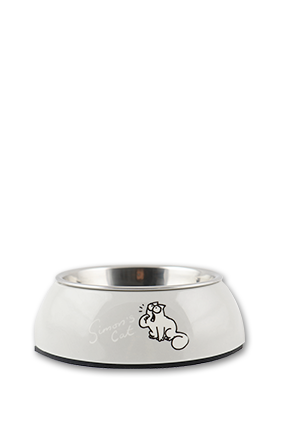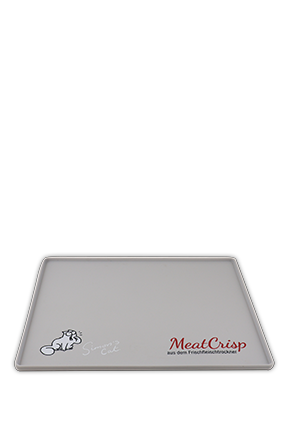Cats and the summer heat
Cats love warmth and summer. They like to lie in the sun - whether outside or in a sunny spot on the windowsill. But when the temperature is around 30 degrees and above, it can be too much even for the cats under their fluffy fur. Regardless of whether you have an outdoor cat or a house cat, there are a few things to keep in mind in summer to prevent health problems from occurring in the first place.
How much heat can cats tolerate?
Even today, we notice that the cat's ancestors were steppe dwellers. In spring or summer they loll in the sun, in the colder months they also like to sit near heaters and stoves. Because even nowadays our furry friends still like it cosy and warm. Generally, the body temperature of cats ranges between 36.7°C and 38.9°C. When they are wrestling or playing with other cats, the temperature can also rise slightly. And also in situations that trigger stress or discomfort - such as a visit to the vet - the body temperature can briefly rise to over 39°C. When the animals calm down again, the temperature drops again. That's why the comfort temperature of a healthy cat is often above the 30 degree mark! However, if the temperature exceeds a certain point (from 35°C), this can quickly turn into the opposite.
Can cats sweat?
Even today, we notice that the cat's ancestors were steppe dwellers. In spring or summer they loll in the sun, in the colder months they also like to sit near heaters and stoves. Because even nowadays our furry friends still like it cosy and warm. Generally, the body temperature of cats ranges between 36.7°C and 38.9°C. When they are wrestling or playing with other cats, the temperature can also rise slightly. And also in situations that trigger stress or discomfort - such as a visit to the vet - the body temperature can briefly rise to over 39°C. When the animals calm down again, the temperature drops again. That's why the comfort temperature of a healthy cat is often above the 30 degree mark! However, if the temperature exceeds a certain point (from 35°C), this can quickly turn into the opposite.
How do cats react to heat?
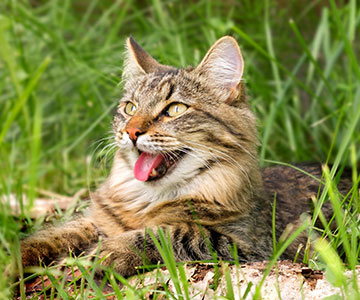 In high temperatures, cats start to pant.
In high temperatures, cats start to pant.
When does heat become dangerous for cats?
- The oral mucosa is darker than usual
- The cat is excited
- The heart beats faster than usual
- The cat is short of breath
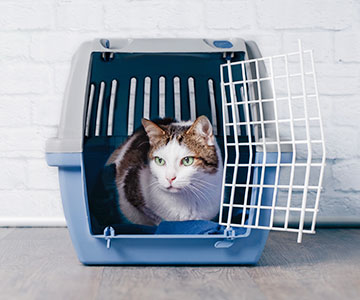 It is better to transport cats in the cooler morning or evening hours.
It is better to transport cats in the cooler morning or evening hours.
Other problems cats can have in the heat
Sunburn
Dehydration
Cats - like us humans - need more to drink on hot days. Otherwise there is a risk of dehydration. Therefore, provide enough water bowls in different places and refill water regularly, as it evaporates more quickly in high temperatures.
Colds or conjunctivitis caused by fans and air conditioners
Tick bites
Ticks are also active in summer. That is why, if you have a free-roaming cat, you should regularly check your four-legged friend for parasites. You can find more information on this topic in our guide "Ticks in cats".
Which food is suitable in summer?
How much water does the cat need in summer?
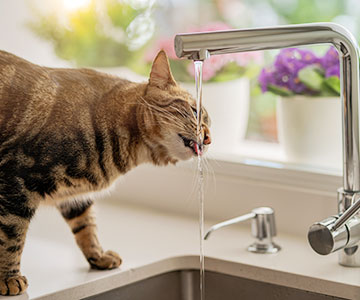 Cats love running water.
Cats love running water.
Tips to help your cat stay cool
Provide a cool, shady spot
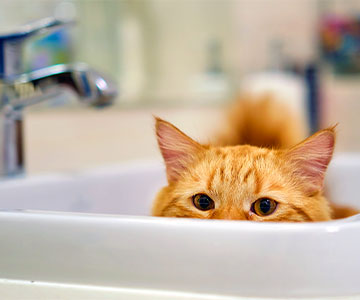 When temperatures are high, cats like to retreat to the cool bathroom.
When temperatures are high, cats like to retreat to the cool bathroom.
Secure balcony for flat cats
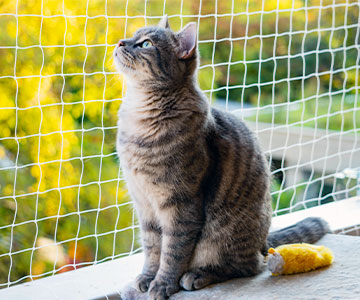 The balcony should be sufficiently secured for your cat.
The balcony should be sufficiently secured for your cat.
Matching movement to temperatures
Moisten the coat and cool it down
Support coat care
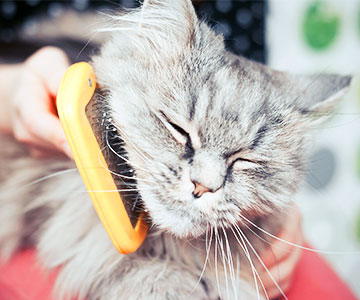 To prevent the heat from becoming uncomfortable for long-haired cats, you can help them with their coat care.
To prevent the heat from becoming uncomfortable for long-haired cats, you can help them with their coat care.
Water games with the cat
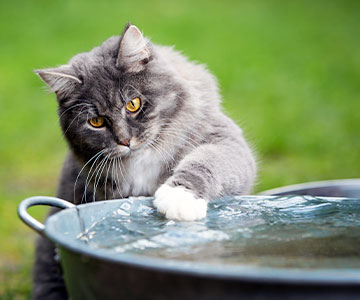 In summer most cats like to play with the cool water.
In summer most cats like to play with the cool water.


 Deutsch
Deutsch
 English
English
 Nederlands
Nederlands
 Français
Français

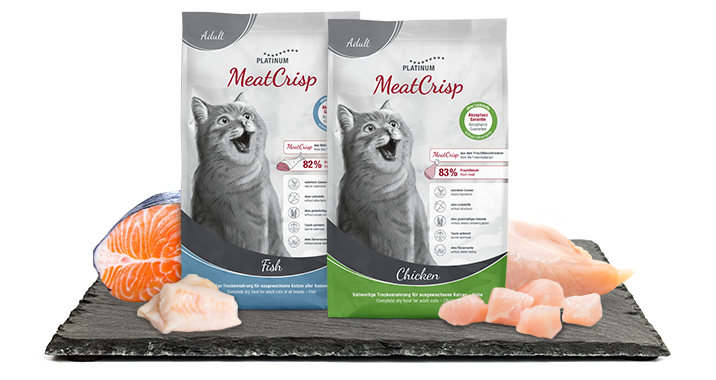
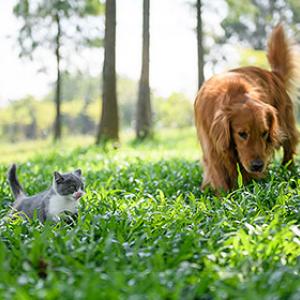
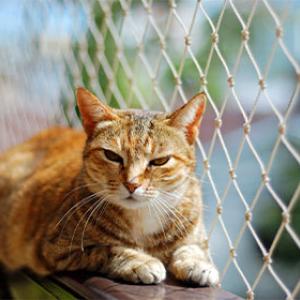
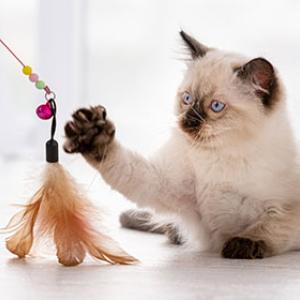
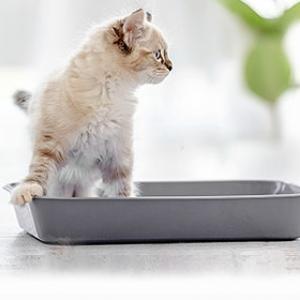
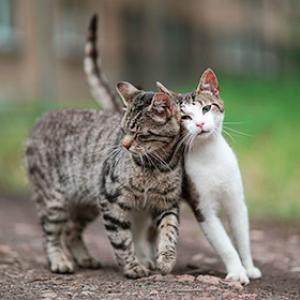
.png)
.png)
.png)
